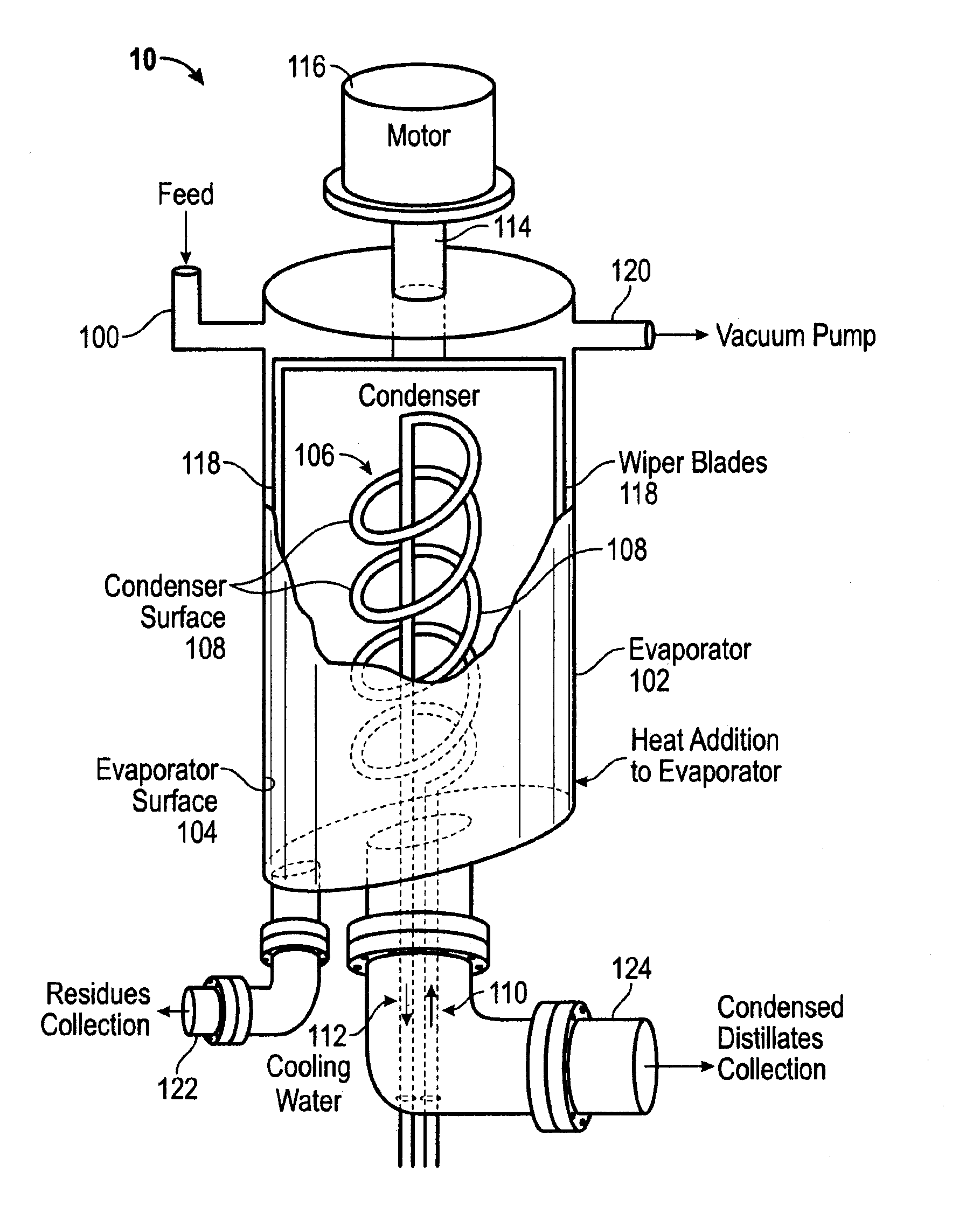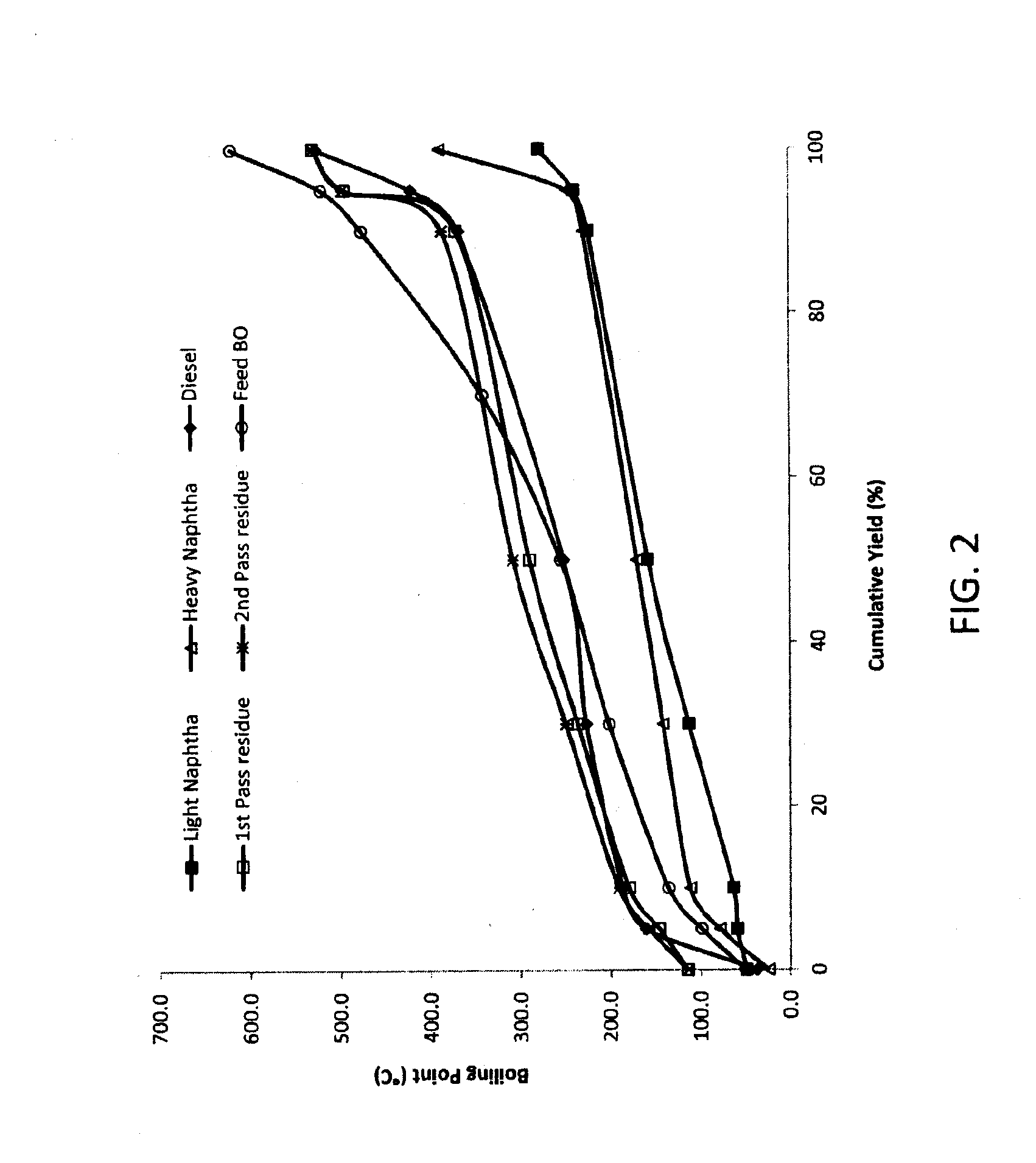Bio-Oil Fractionation
a biooil and fractionation technology, applied in the field of biooil fractionation processes and systems, can solve the problems of difficult fractionation into various boiling point fractions, difficult separation into aqueous and hydrocarbonaceous phases, and lower than desired and expected yields of light and middle distillate fractions
- Summary
- Abstract
- Description
- Claims
- Application Information
AI Technical Summary
Benefits of technology
Problems solved by technology
Method used
Image
Examples
examples
[0067]Four different samples of bio-oils, each separately produced from the thermo-catalytic conversion of southern yellow pine wood chips, were subjected to molecular distillations carried out using Short Path Evaporators (SPE's) at two different scales (bench top scale SPE and pilot plant scale SPE). Each of the SPE's included a feed tank, evaporator, rotor, condenser, cold-trap, vacuum system, and heating and cooling baths. The evaporator was heated using heating oil from the heating bath, and the condenser was cooled using the chilled water from the cooling bath. The vacuum for the system was controlled by an aeration valve used to add pressurized nitrogen. The cold trap served to protect the vacuum system from volatiles escaping the evaporation and condensation sections.
[0068]Certain properties of the Bio-Oil feeds are provided in Table 1 below.
TABLE 1Bio-Oil SampleABCDDensity1.131.071.061.06[Water], wt %9.552.544.7324.0TAN, mg KOH / g37.34.704.812.1O, wt %19.610.0910.314.8
RUN 1
[...
PUM
| Property | Measurement | Unit |
|---|---|---|
| temperature | aaaaa | aaaaa |
| temperature | aaaaa | aaaaa |
| temperature | aaaaa | aaaaa |
Abstract
Description
Claims
Application Information
 Login to View More
Login to View More - R&D
- Intellectual Property
- Life Sciences
- Materials
- Tech Scout
- Unparalleled Data Quality
- Higher Quality Content
- 60% Fewer Hallucinations
Browse by: Latest US Patents, China's latest patents, Technical Efficacy Thesaurus, Application Domain, Technology Topic, Popular Technical Reports.
© 2025 PatSnap. All rights reserved.Legal|Privacy policy|Modern Slavery Act Transparency Statement|Sitemap|About US| Contact US: help@patsnap.com



